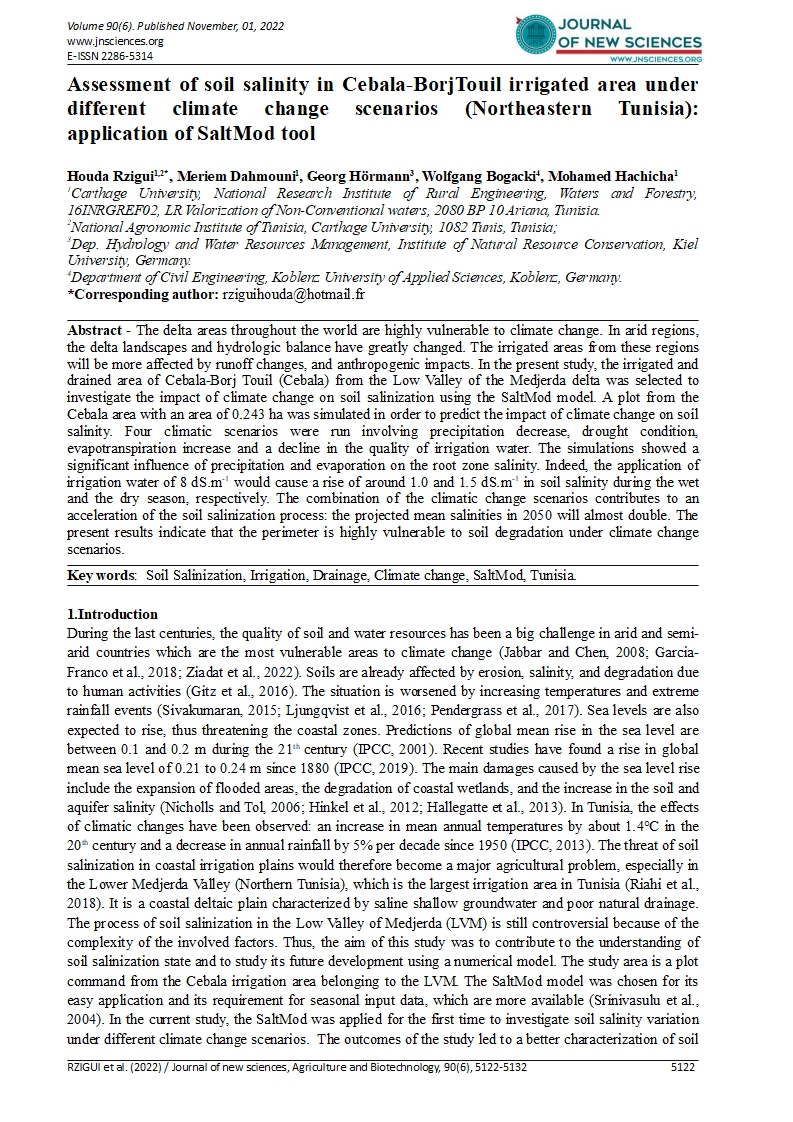

- Category: Volume 90
- Hits: 1666
Assessment of soil salinity in Cebala-BorjTouil irrigated area under different climate change scenarios (Northeastern Tunisia): application of SaltMod tool
Houda Rzigui1,2
Meriem Dahmouni1
Georg Hörmann3
Wolfgang Bogacki4
Mohamed Hachicha1
1Carthage University, National Research Institute of Rural Engineering, Waters and Forestry, 16INRGREF02, LR Valorization of Non-Conventional waters, 2080 BP 10 Ariana, Tunisia.
2National Agronomic Institute of Tunisia, Carthage University, 1082 Tunis, Tunisia;
3Dep. Hydrology and Water Resources Management, Institute of Natural Resource Conservation, Kiel University, Germany.
4Department of Civil Engineering, Koblenz University of Applied Sciences, Koblenz, Germany.
DOI: https://doi.org/10.55416/sunb.jns01.2211.09006
Abstract - The delta areas throughout the world are highly vulnerable to climate change. In arid regions, the delta landscapes and hydrologic balance have greatly changed. The irrigated areas from these regions will be more affected by runoff changes, and anthropogenic impacts. In the present study, the irrigated and drained area of Cebala-Borj Touil (Cebala) from the Low Valley of the Medjerda delta was selected to investigate the impact of climate change on soil salinization using the SaltMod model. A plot from the Cebala area with an area of 0.243 ha was simulated in order to predict the impact of climate change on soil salinity. Four climatic scenarios were run involving precipitation decrease, drought condition, evapotranspiration increase and a decline in the quality of irrigation water. The simulations showed a significant influence of precipitation and evaporation on the root zone salinity. Indeed, the application of irrigation water of 8 dS.m-1 would cause a rise of around 1.0 and 1.5 dS.m-1 in soil salinity during the wet and the dry season, respectively. The combination of the climatic change scenarios contributes to an acceleration of the soil salinization process: the projected mean salinities in 2050 will almost double. The present results indicate that the perimeter is highly vulnerable to soil degradation under climate change scenarios.
Key words: Soil Salinization, Irrigation, Drainage, Climate change, SaltMod, Tunisia

